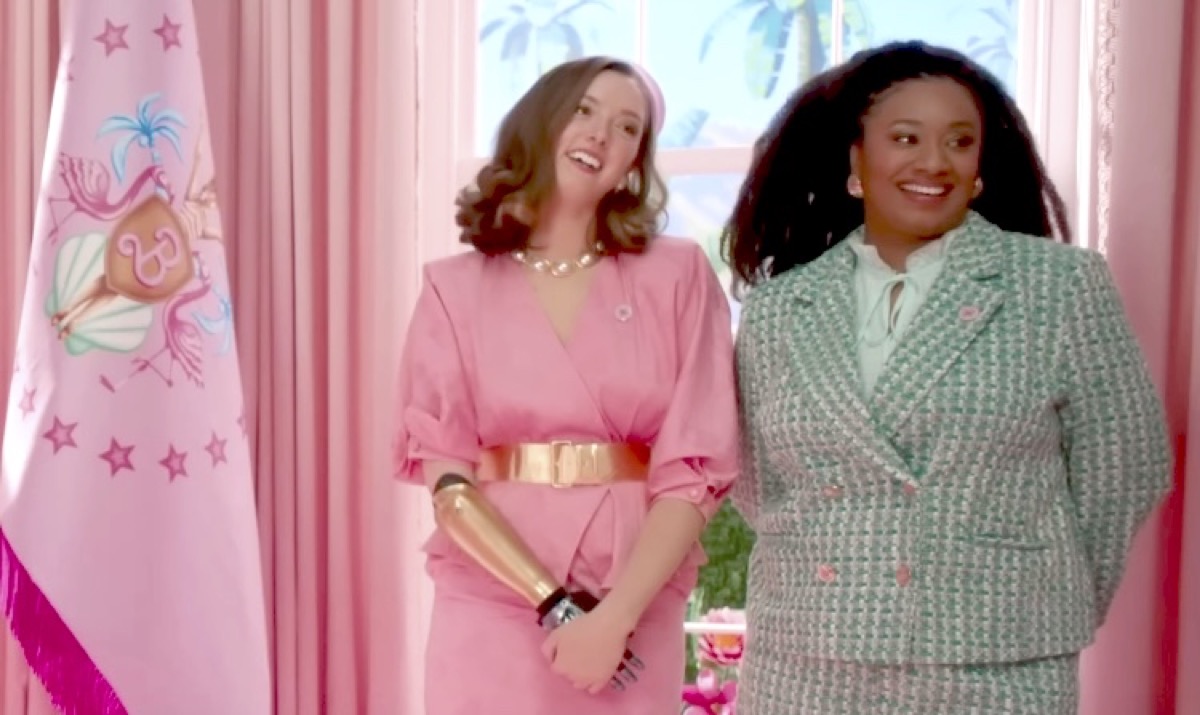My Younger Self Would Love That There Are On-Screen Barbies With Disabilities
No longer plastic, but is it still fantastic?

When the trailer for Greta Gerwig’s Barbie movie dropped, everyone went wild, and with good reason. But something in particular stuck out to me. Barbie can have disabilities, too, you know?
Being young and disabled before around the mid-2010s was rough—and it still is—but back when I was little in the early 2000s, there wasn’t a whole lot of disability representation on our screens, big or small. There certainly wasn’t really a whole lot on the toy market for those of us who didn’t look like, or have the same experiences as, the average kid.
I do remember one instance of disability that will forever make me slightly teary: Gabriella from The Little Mermaid TV series, a deaf girl who communicated through American Sign Language and had a companion, an octopus called Ollie, as her interpreter. She was featured in the second season of the show in 1993, befriending Ariel and going on adventures with her. Although Gabriella and I have different disabilities, I gravitated toward her character and felt that she was “just like me.” I remember feeling, so vividly, that if she could be a mermaid, so could I.
The new trailer shows a Barbie, an aide to the president, with a prosthetic arm, and a Barbie in a wheelchair can be spotted (if one looks closely) out of focus in the background, at about 57 seconds into the trailer. I didn’t even spot them myself; it was a TikToker who pointed it out. I suppose that’s what happens when you’re visually impaired, but then, neither of them is too obvious, appearing for a couple of seconds each.
I don’t know how much screen time they’ll both get (or if there are more Barbies with disabilities), and I really hope it’s more than just a moment. But just knowing that they exist makes me happy. It brings me joy that little kids will potentially go into the cinema and see themselves in Barbie. Barbie! Though there is a cynical part of me that wonders if that peak of them in the trailer was some sort of ploy, a checkbox to make sure that Barbie looks like it’s inclusive, that it’s moved past its many controversies and lack of diversity.
Despite absolutely loving the animated Barbie films, I was always a Bratz girl and never picked up a Barbie; she just wasn’t for me. However, though Bratz was ahead of the times in that they didn’t cook and clean for a man, wore makeup and non-conservative clothes, and were a racially diverse set of dolls, they were missing characters that had disabilities (unless, of course, you count influencer Shelby Lynch). Mattel, on the other hand, has been trying to make the Barbie line more inclusive when it comes to the disabled community for some time.
In 1997, they introduced the first physically disabled Barbie. She was called Share a Smile With Becky, and despite being a popular doll, she was removed from the shelves pretty quickly. Her manufacturer insisted it was nothing to do with the fact that she was disabled, and I believe them, but something else I believe to be equally true is the fact that Becky was ready for us; we just weren’t ready for her. According to this article, her wheelchair was too big to fit into the Dream House, and her long hair would get stuck in the wheels of her chair, and although a rebranded version of her appeared, with a smaller chair and shorter hair, it seems that not even dolls can escape ableism!
But since then, Mattel has released a whole line of dolls with disabilities that features a doll in a wheelchair, a deaf Barbie with a hearing aid, and a Ken with Vitiligo. AmeriDisability reported that the Global Head of Barbie and Dolls Portfolio at Mattel, Lisa McKnight, said about the line, “Our Barbie Fashionistas line features a range of skin tones, body types and disabilities to reflect the diversity kids see in the world around them. Knowing that kids’ early childhood experiences help shape how they perceive the world, we are dedicated to reflecting a multi-dimensional view of beauty and fashion in our dolls.”
The dolls were put on shelves last year and were well received, so better late than never, I guess?
Finally, we’ll get to see ourselves as real-life Barbies in a blockbuster made for kids who love her and the adults who once did. From being so young and seeing Gabriella swimming alongside Ariel to now seeing Barbies with disabilities in my early 20s, it makes my heart all warm and fuzzy, and I hope when July comes, we see more than a glimpse of those characters.
(featured image: Warner Bros)
Have a tip we should know? [email protected]
